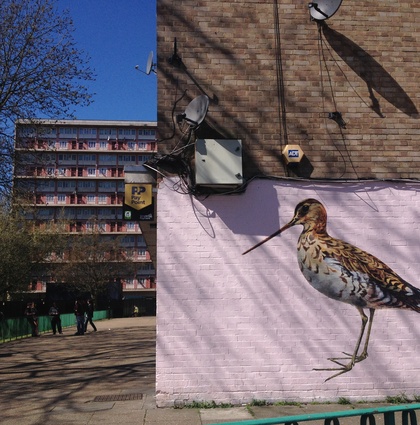
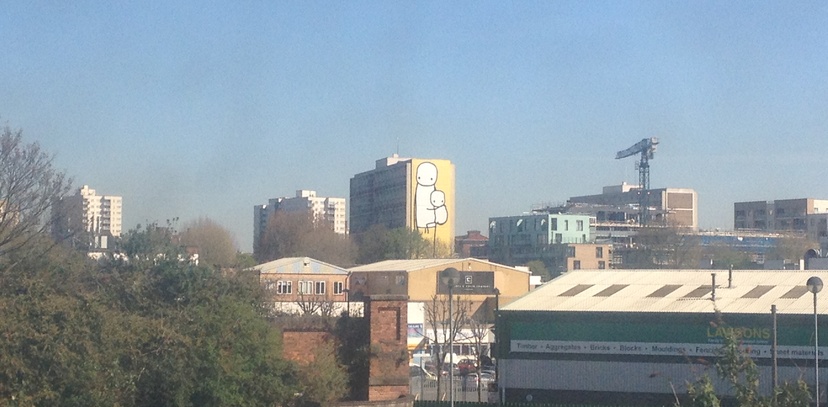
Approaching South Acton on the Piccadilly line, a mural portraying a mother holding a child greets you. At 125 feet, the mural, Big Mother by street artist Stik, has been labelled the “UK’s tallest piece of street art”, and it gives a hint to the many other street art pieces to which the estate is home to.
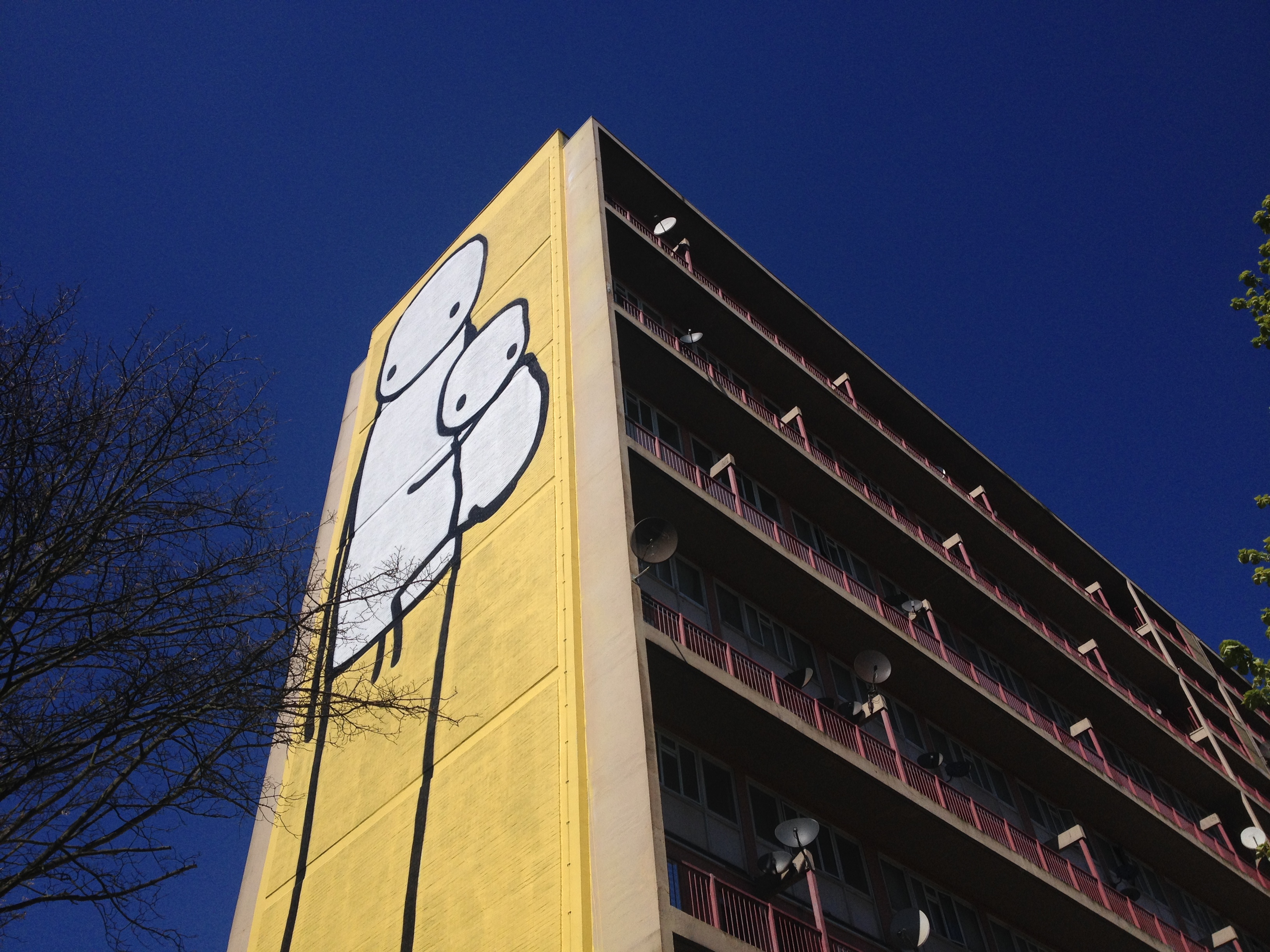
Big Mother by street artist Stik, photo by Lucia Caistor
According to Stik, “[t]he mother and child symbol are a representation of the family that live in this block.”[1] The figures have become an emblem of the housing crisis in London, and Stik explains that “[a]ffordable housing in Britain is under threat, this piece is to remind the world that all people need homes.”[2]
The mural was created as part of the South Acton Heritage Exhibition (2014), aimed at bringing art by local artists to streets and public spaces. Manager of the Acton Arts Forum stated that, “[i]t is part of [a] wider project to get local street artists to brighten up the area. There are some dark and dingy parts on the estate and we now have about 15 or 16 pieces of artwork that people come to see especially.” [3] With projects such as the South Acton Exhibition and the ‘Art Hits the Streets’-project in 2013, the Acton Arts Forum has supported most of the street art on the estate.
When walking around on the estate, the street art lights up the spaces in between the buildings. Besides Stik’s Big Mother, South Acton boasts pieces by several other street artists such as ATM, Carrie Reichart, Weardoe, and Sr. X. The street art has received public attention on blogs and local and national newspapers, including The Independent and The Guardian. The artworks have become a cultural attraction in the area. An example is ATM’s series Big Bird to which South Acton is home to several of. The paintings of endangered birds stand as political statements. The birds, either extinct or endangered in the nature around South Acton, are warning signs for the wildlife disappearing because of environmental changes and growing urbanization.
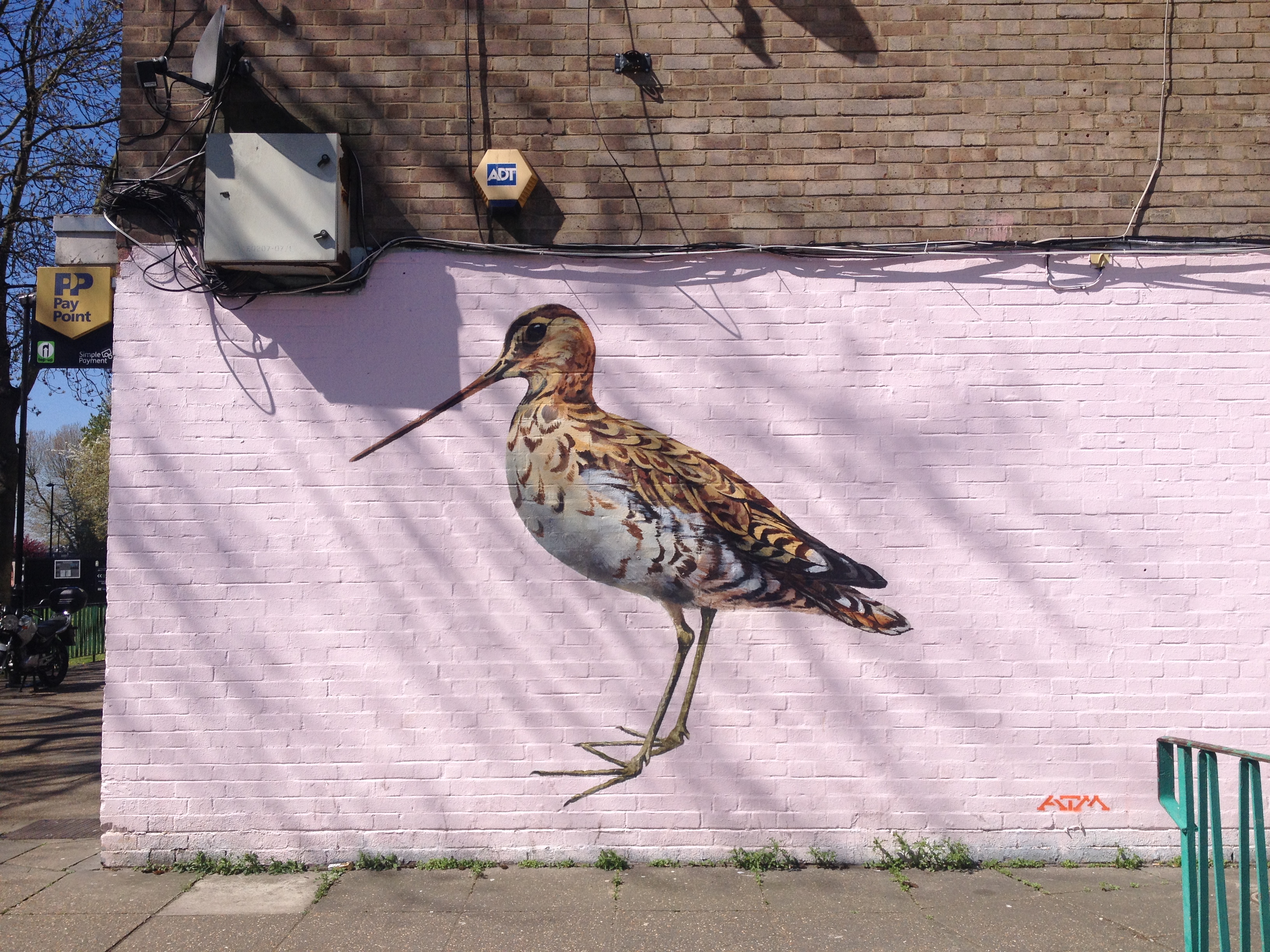
The Acton Sniper part of the Big Bird series by ATM, photo by Lucia Caistor
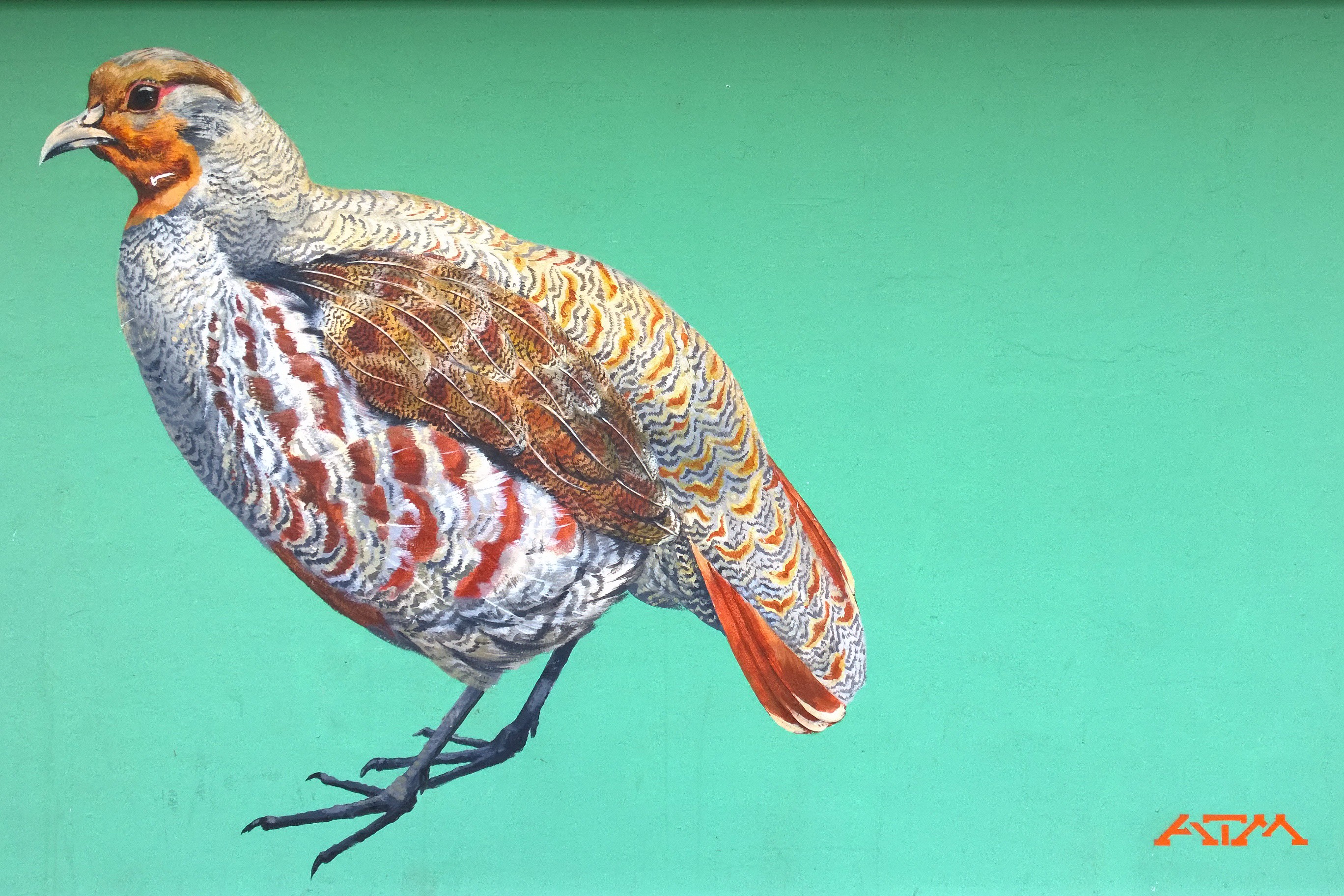
The grey patridge part of the Big Bird series by ATM, photo from inspiring city
The South Acton Estate is currently going through a substantial regeneration process, which will take place over the next twenty years. The initiatives by the Acton Community Forum are actively using the transitional state of the buildings and outdoor spaces to form a gallery for local artists, as space which is often forgotten in regen-processes. In many regeneration cases the buildings are left with as little repair done as possible, due to the future demolition. This creates an aesthetic divide between old and new, which affects the experience of people living on the estate. By using the empty walls of the buildings the projects bring art into the daily lives of the residents and help create something to be proud of. One local resident commented on the new art appearing in the area that “it brightens up the grim little bits of the estate, changing an eyesore into something pleasant.” [4]
The council saw the project as a good initiative, after the appearance of the art on the walls Ealing Council’s regeneration manager, David Colley, stated in an interview with Acton W3 that, “the regeneration of South Acton is about more than just replacing old buildings, and we’re really pleased that some of the less attractive areas of the estate, which will be with us for some years before they can be replaced, can play host to such beautiful works of art” [5].
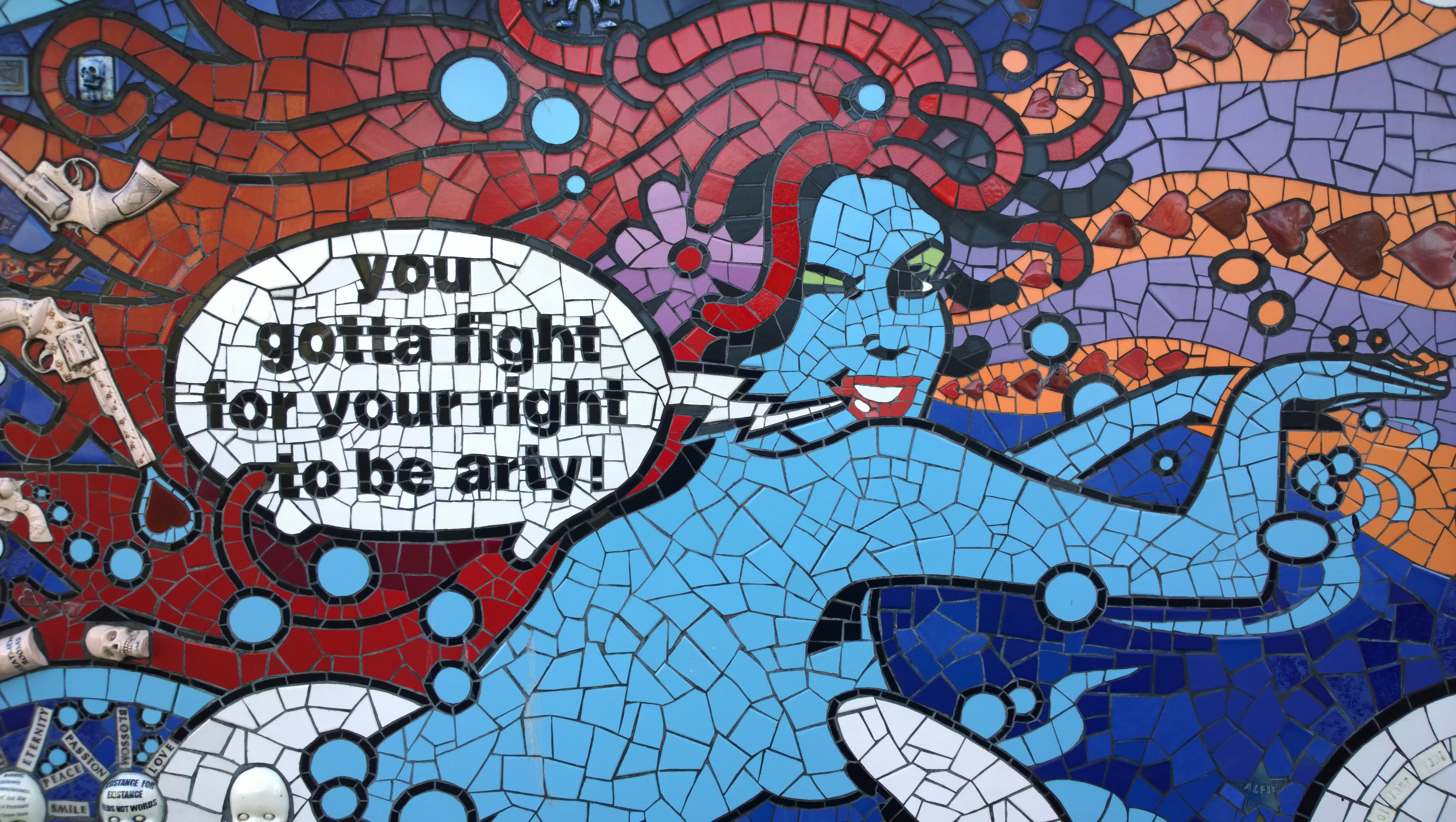
Piece by Carrie Reichardt, photo from Inspiring City
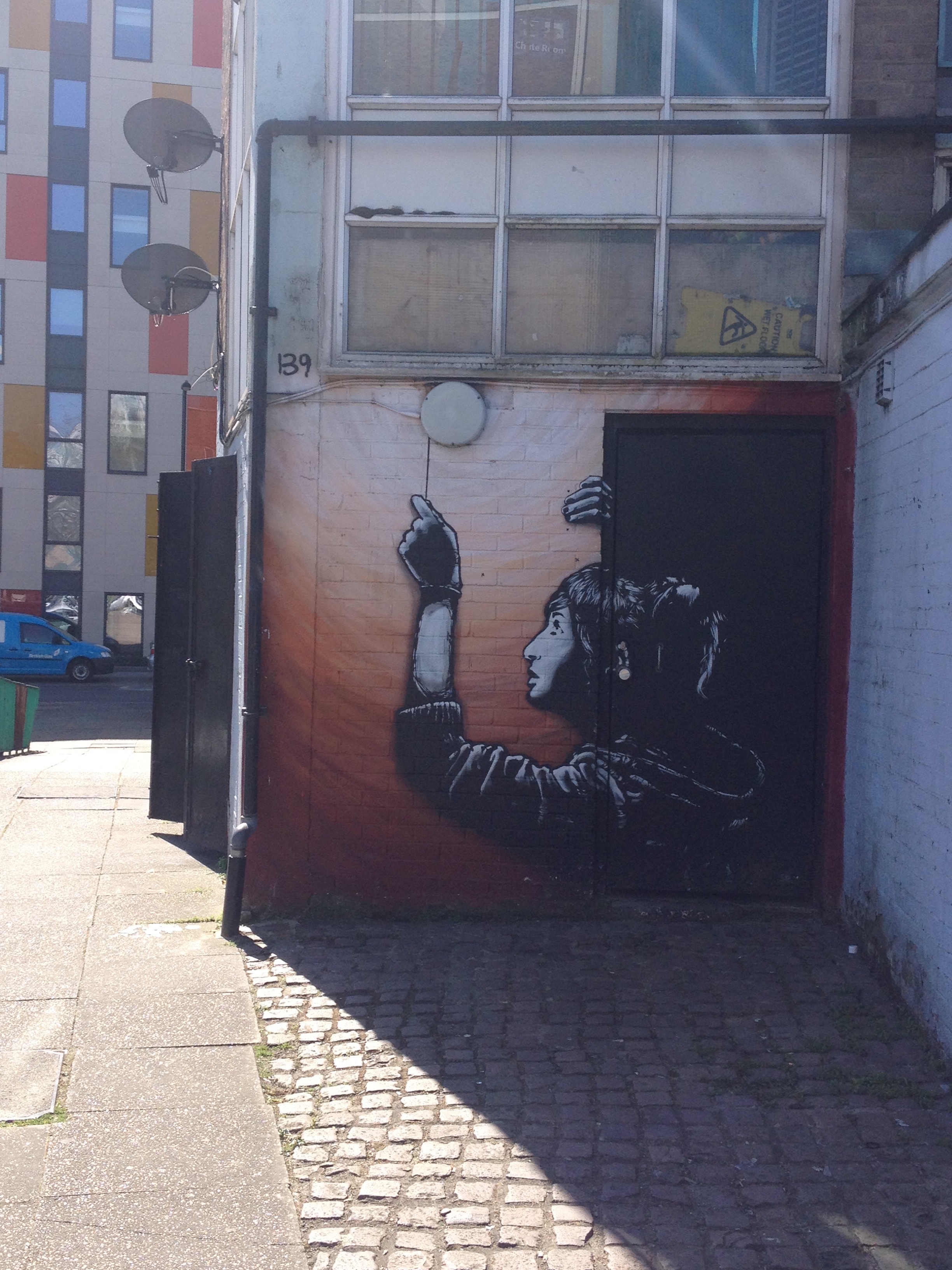
Piece by Sr. X, photo by Lucia Caistor
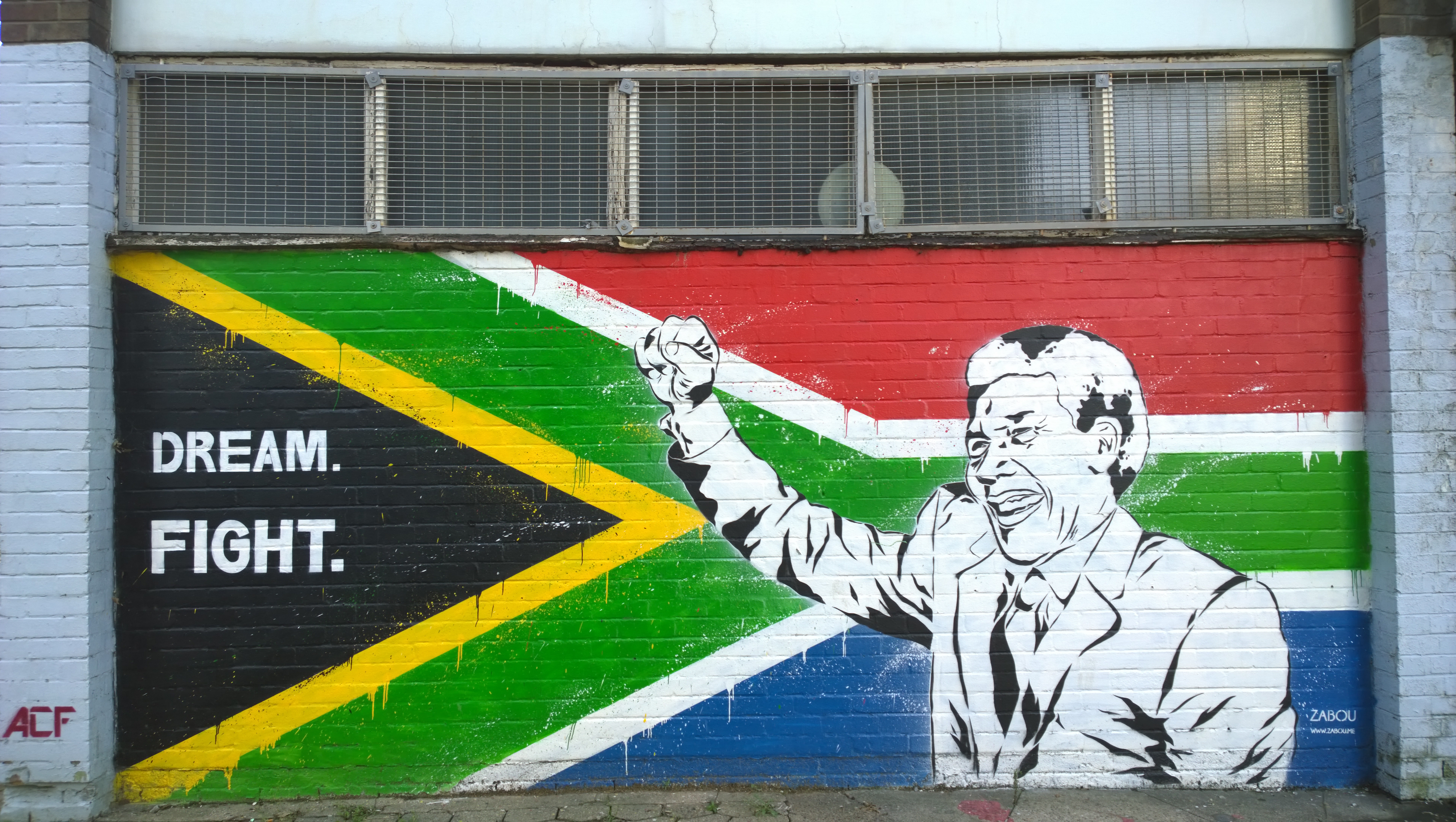
Zabou’s tribute to Nelson Mandela, photo from Inspiring City
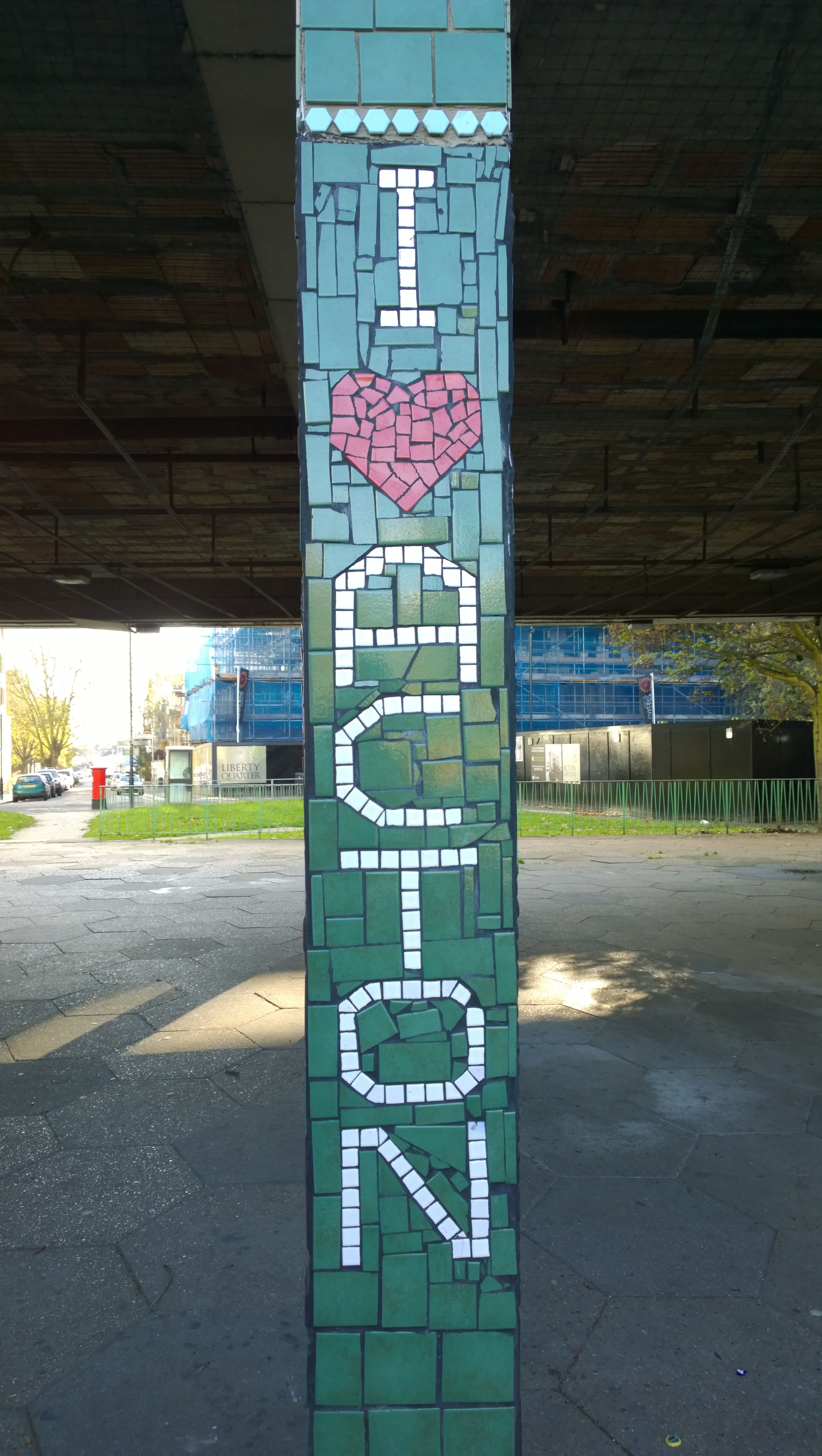
Mosaic by Carrie Reichardt, photo from Inspiring City
There is no doubt; the street art on South Acton Estate is exceptional because of the scale, quality, and number of pieces. But it is also an interesting example of how the “in between” state of buildings in regeneration processes can be claimed by a local community group - in this case as a gallery for local artists. Street art is not the answer to manage tensions caused by regeneration. However, South Acton is a good example of how supporting local art and culture can be a useful way of supporting the existing community identity.
Sources:
http://www.theguardian.com/artanddesign/2014/mar/22/warning-signs-street-artist-atm-birds?CMP=twt_gu
http://www.actonforum.org/projects/108-public-art-tour
http://www.actonw3.com/default.asp?section=info&page=evbirds001.htm
http://www.actonforum.org/heritage/index.php/view-submissions/item/south-acton-heritage-exhibition
---
[1] Stik in an interview with the independent, November 2014
[2] Stik in an interview with Street Art News, November 2014
[3] Rachel Pepper, Project Manager for Acton Arts Forum in an interview with the Independent, November 2014
[4] Resident cited cited on Acton W3's website, May 2013
[5] David Colley cited on Acton W3's website, May 2013
This blogpost was written by Emma Nielsen.
See more about South Acton and Social Life’s work on measuring the social impact of the regeneration process here
